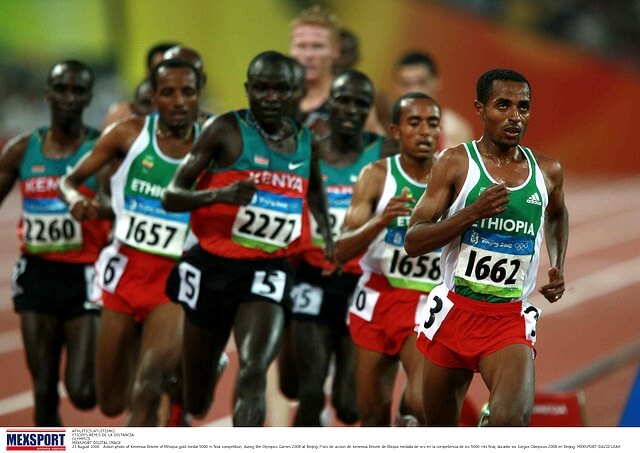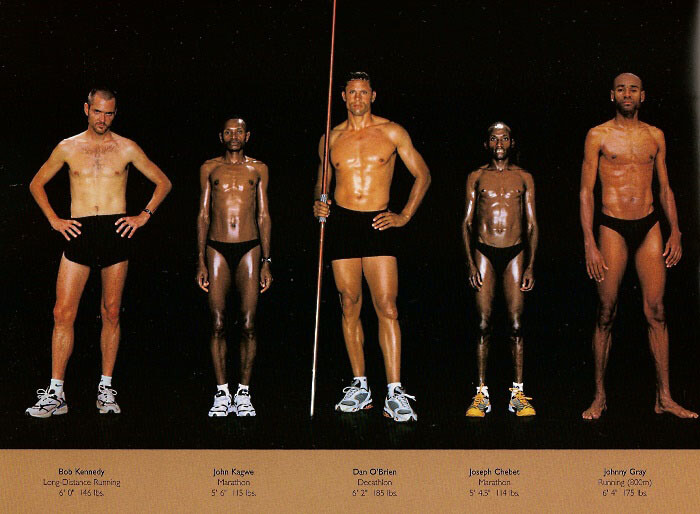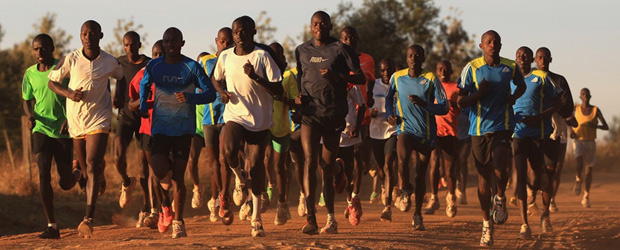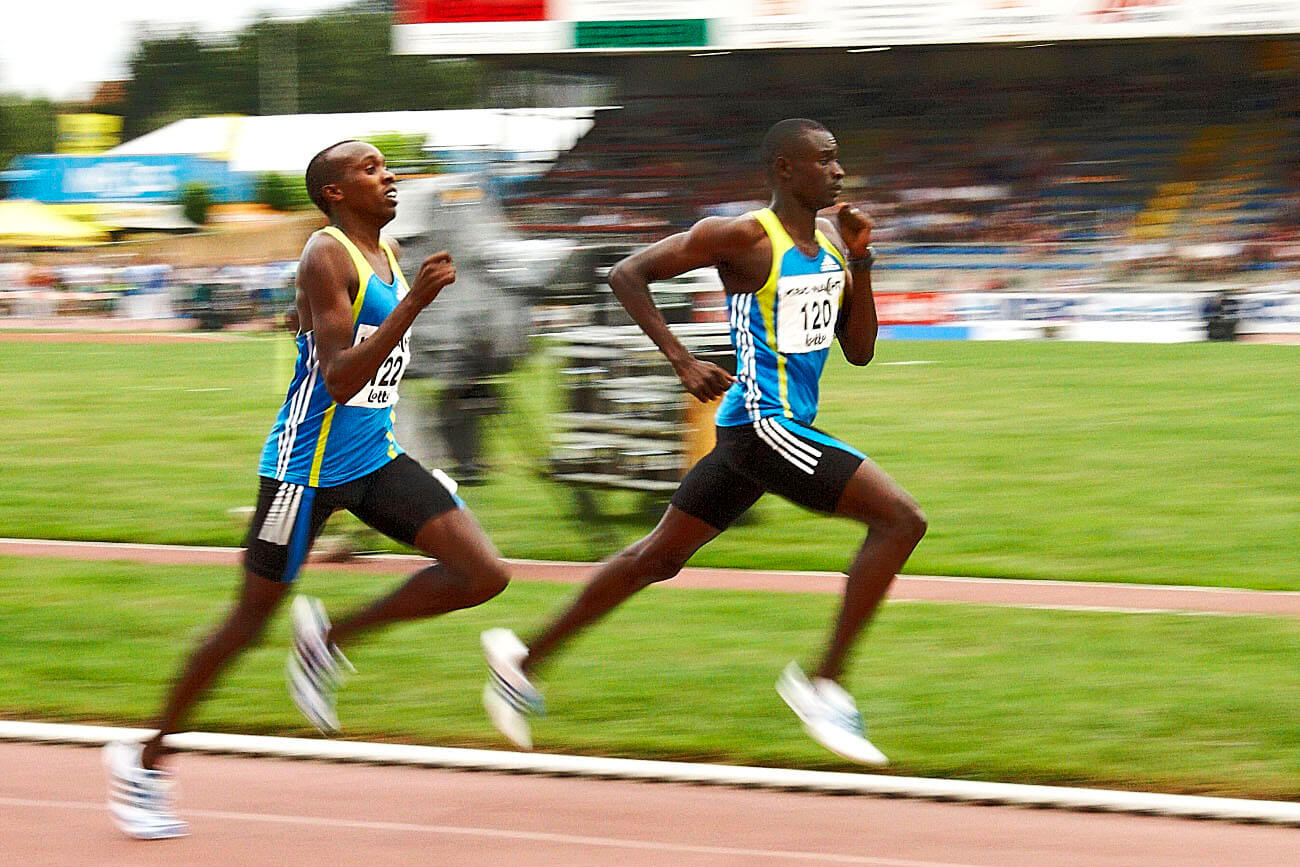East African runners, especially Kenyans and Ethiopians have dominated long distance athletics over the past few decades. Ethiopia’s Kenenisa Bekele holds the two world records in 5,000 metres and 10,000 metres while Tirunesha Dibaba and Almaz Ayana, both from Ethiopia share the women records. Dibaba holds the women record for 5000 metres while Ayana broke the 10,000 metres record at the 2016 Rio Summer Olympics.
The dominance started at the 1968 Mexico City Olympics, when Kalenjin runner Kipchoge Keino defeated world-record holder Jim Ryun in the 1500 metres race. Kipchoge had run despite a gall bladder infection. Since 1988, 20 of the 25 first-place men in the Boston Marathon have been Kenyan.

Action photo of Kenenisa Bekele of Ethiopia gold medal 5000 m final competition, during the Olympics Games 2008 at Beijing. Flickr / CONADEoficial
This dominance became more obvious from the 1980s when East Africans, whether representing their countries or foreign countries like United States, Great Britain and so on, have led long distance races.
In 2013, Kenya’s Wilson Kipsang won the Berlin Marathon with the fastest marathon time ever recorded. What was remarkable was that fellow Kenyans came in second, third, fourth and fifth place. While on the women’s side, Kenyans were first, second and fourth. Britain’s long distance legend, Mo Farah hails from Somalia, another East African country.
GENETICS
Claims that the dominance may have been fueled by genetic composition have largely been declared unfounded. So far, no study has been able to back this claim and thus it is believed that other factors asides from genetic factors has resulted in the dominance of the East Africans.
However, Kenyans are known to have less mass for their height, longer legs, shorter torsos, and more slender limbs. This makes their body type suitable for long distance races.

… feeling for the competitive edge the Kenyan runners’ (who look so similar to each other they could be from the same ethnic group as well, perhaps Kalenjin, known for runners)
CULTURE
At a young age, East Africans are known to run to school. Some cover about 12 kilometres every day. Most of the times, this is done on barefoot. Asides this, diets rich in proteins but low in fats fill many of the menus of East Africans. Dairy products, meat as well as local foods like Ugali help fulfil their dietary requirements. Pastoralism is also ingrained in the East African culture which takes East Africans on journeys along plains and heights with their cattle or sheep.
THE KALENJINS
Worthy of note, is this Kenyan tribe, which has produced some of the most remarkable runners in the history of long distance racing. The Kalenjin is known as the running tribe. From 1980 on, about 40% of the top honours available to men in international athletics at these distances have been earned by Kalenjin.
Pamela Jelimo, Paul Tergat, Kipchoge Keino, Helen Kimaiyo, Wilson Kipketer, Henry Rono, Moses Kiptanui are some of the names that have dominated the world’s long distance race courses in the past few decades.
Kalenjins are pastoralists and thus have a good meal of meal and milk. These provide the body with high energy carbohydrates and calcium. However, one of the most significant advantages are the high altitudes that Kalenjins live. This enables them build a better running endurances such that when they compete at courses of lower altitudes, they easily win.
The body type is also another good example. Kalenjins are known to have thin ankles and calves, which is an advantage to runners by making the feet generally lighter.

THE ALTITUDE ADVANTAGE
East Africa is characterized by its high altitudes. Africa’s highest altitudes are in East Africa. Ethiopian and Kenyan runners are born at altitudes around 2000 metres and above. This enables them build superior levels of haemoglobin and haematocrit which leads to increased ability to transport oxygen to the working muscles. This also builds their ability to train at high intensity at normal altitudes.
Other world class athletes are known to train in higher altitudes to better their chances. One of these is Mo Farah, the British runner who trains on the outskirts of Addis Ababa. The United States camp is also situated in Colorado, a place known for its relatively high altitudes.
THE FINAL LAP
Whether running to school, or after cattle or in camps, one thing you cannot take away from East African runners is that they have been preparing for the big stage all their lives. The hours consciously or unconsciously dedicated to mastering long distance races easily manifests when they finally get set to run at events. When the race begins, it’s just another course they have been used to, only this time, there is a bigger motivation- an escape from poverty.
Lets talk about Africa.
Join the conversation
Get Started

